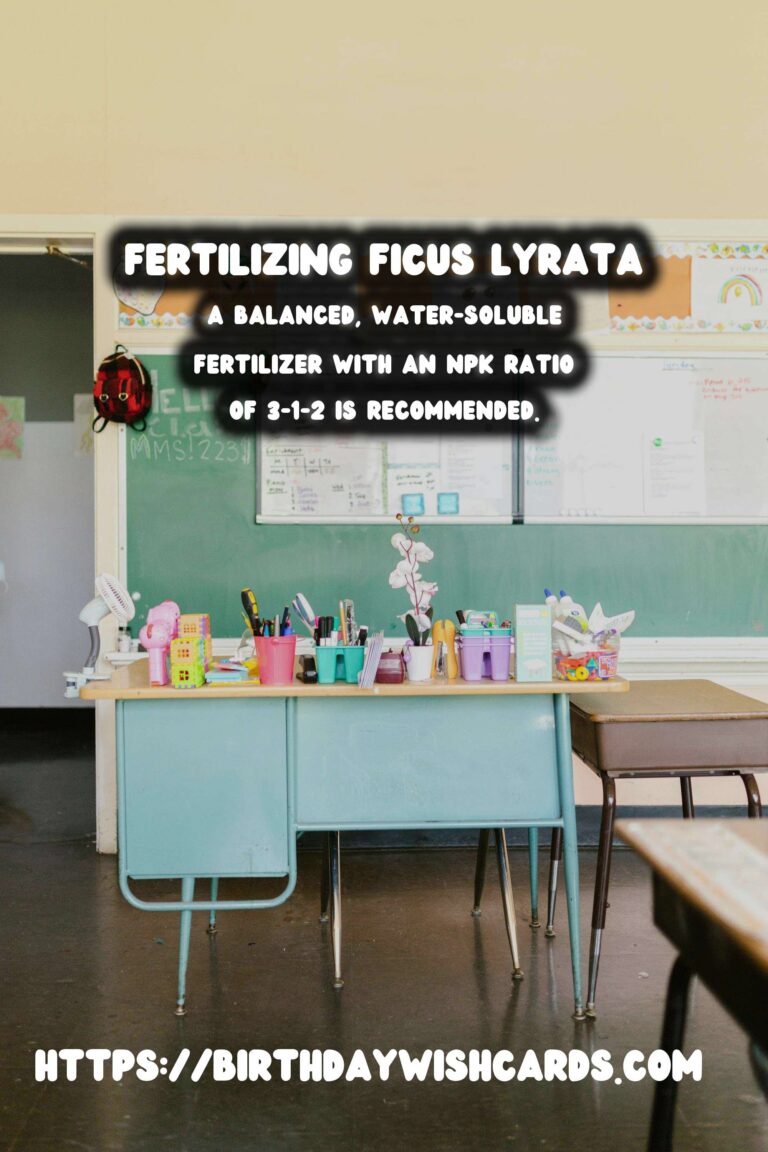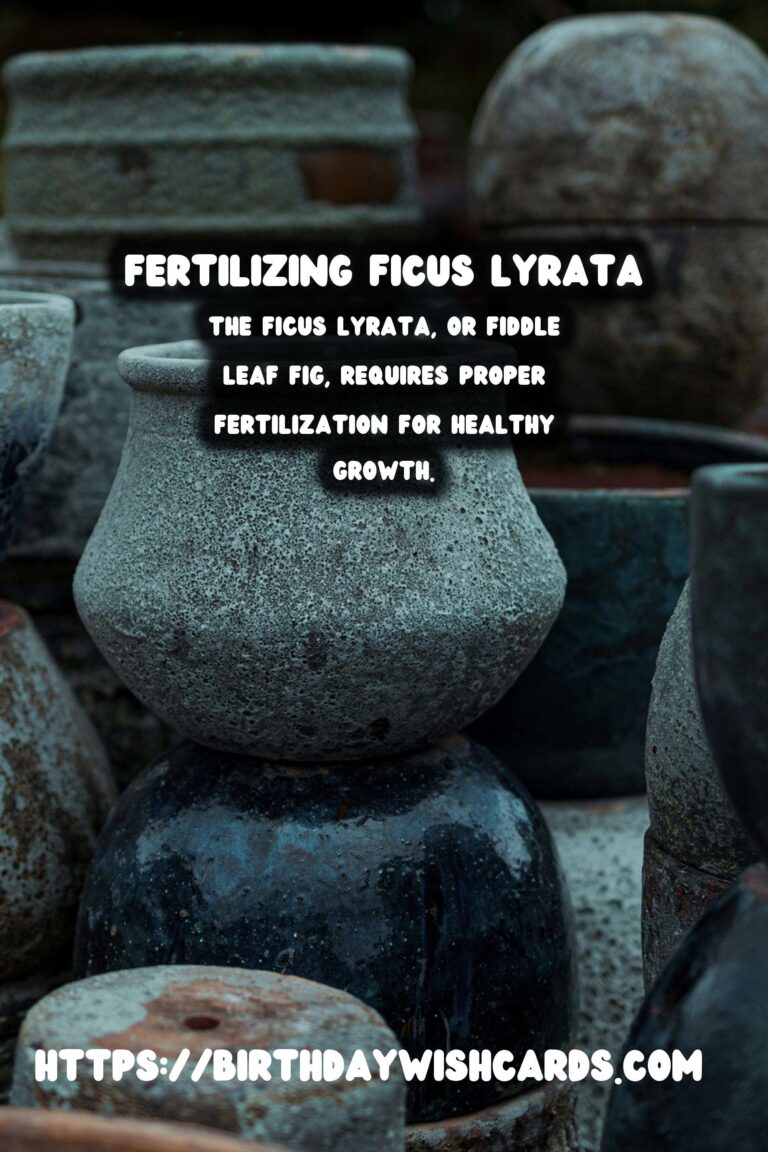
The Ficus Lyrata, commonly known as the fiddle leaf fig, is a popular houseplant cherished for its large, violin-shaped leaves. To keep your Ficus Lyrata thriving and promote new growth, proper fertilization is essential. In this detailed guide, we will explore the best practices for fertilizing your Ficus Lyrata, ensuring it remains healthy and vibrant.
Understanding Ficus Lyrata’s Nutritional Needs
Before diving into the specifics of fertilization, it’s crucial to understand the nutritional requirements of a Ficus Lyrata. Like most plants, it needs a balance of essential nutrients, including nitrogen (N), phosphorus (P), and potassium (K), commonly referred to as NPK. These nutrients support various growth processes, such as leaf development, root growth, and overall plant health.
In addition to NPK, Ficus Lyrata also benefits from secondary nutrients like calcium, magnesium, and sulfur, as well as trace elements such as iron, manganese, and zinc. These nutrients play important roles in photosynthesis, chlorophyll production, and enzyme function.
Choosing the Right Fertilizer
Selecting the right fertilizer is key to ensuring your Ficus Lyrata receives the appropriate nutrients. A balanced, water-soluble fertilizer with an NPK ratio of 3-1-2 is often recommended for fiddle leaf figs. This ratio provides adequate nitrogen for leaf growth while supporting root and stem development with phosphorus and potassium.
Organic fertilizers can also be a great option, as they release nutrients slowly and improve soil health over time. Look for organic fertilizers that contain composted manure, bone meal, or fish emulsion.
When and How to Fertilize
The growing season for Ficus Lyrata typically occurs in spring and summer. During these months, the plant is actively growing and requires more nutrients. Plan to fertilize your Ficus Lyrata every 4-6 weeks during the growing season.
To fertilize, dissolve the recommended amount of fertilizer in water, as instructed on the product label. Water your plant with this solution, ensuring even distribution around the base of the plant. Avoid applying fertilizer to dry soil, as this can lead to root burn. Instead, water the plant with plain water a day before fertilizing.
Signs of Over-Fertilization and Under-Fertilization
It’s important to monitor your Ficus Lyrata for signs of over-fertilization or under-fertilization. Over-fertilization can cause leaf burn, yellowing, and browning of leaf edges. If you notice these symptoms, reduce the frequency of fertilization and flush the soil with water to remove excess salts.
Under-fertilization, on the other hand, may result in stunted growth, pale leaves, and reduced leaf size. In such cases, consider increasing the frequency of fertilization or adjusting the dosage.
Additional Tips for Healthy Growth
In addition to proper fertilization, there are other factors to consider for the overall health of your Ficus Lyrata. Ensure your plant receives adequate light, as it thrives in bright, indirect sunlight. Rotate the plant regularly to promote even growth and avoid leaning.
Maintain a consistent watering schedule, allowing the top inch of soil to dry out between waterings. Overwatering can lead to root rot, while underwatering may cause leaf drop.
By understanding the fertilization needs of your Ficus Lyrata and providing the right care, you can enjoy the lush, green foliage and robust growth of this beautiful houseplant.
The Ficus Lyrata, or fiddle leaf fig, requires proper fertilization for healthy growth. A balanced, water-soluble fertilizer with an NPK ratio of 3-1-2 is recommended. Fertilize every 4-6 weeks during the growing season for optimal results. Avoid over-fertilization to prevent leaf burn and other issues. Ensure adequate light and consistent watering for overall plant health.
#FicusLyrata #FiddleLeafFig #IndoorPlants #PlantCare #GardeningTips

